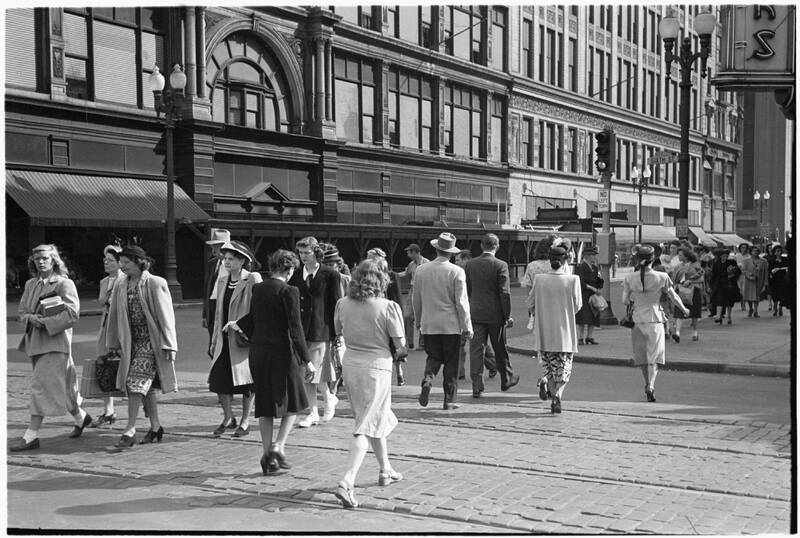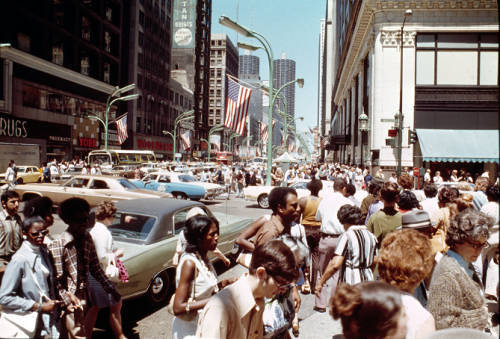Street Photography in Illinois: Introduction
Although it can be difficult to pin down the exact nature of street photography due to its changing value over the centuries, in its simplest form, the term “street photography” describes photographs taken in public, usually urban, spaces where people are depicted living their everyday lives. Street photographers capture space, time, and energy.
Although there are many overlaps with photojournalism, street photography is informed by the photographer’s perspective and intent, suggesting an artistic side that photojournalism often avoids. An artistic eye and the candid and true-to-life nature of these photographs is what makes them so captivating.
Street photography, which does typically focus on people in cities, can also include photographs of buildings and spaces themselves, devoid of people. However, even when lacking a person in frame, there is often an emphasis on the connection between a place and the people who live there.
A subcategory of street photography can be described as street portraits, although some photographers arguethat these photos should not be included in the genre; in this case, the photographer would communicate with the subject and request permission to take their picture (the result being a shot which is not candid). However, due to the spontaneity of the portraits and the laity of the models, some of the charm of classic street photography still remains.




